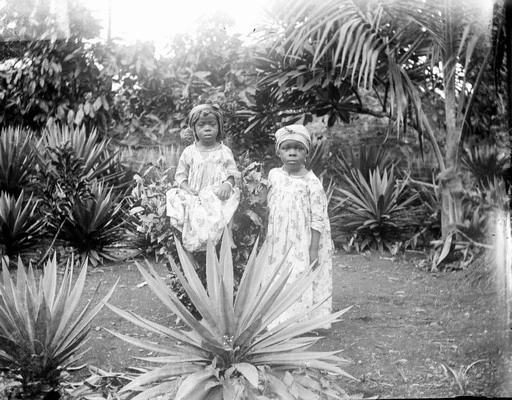Table of Contents
- The Role of Education in British Colonialism
- The Structure of Colonial Education
- The Impact of Colonial Education on Social Stratification
- Resistance to Colonial Education
- The Long-Term Consequences of Colonial Education
- Conclusion
British colonial education is an important facet of understanding the broader impact of the British Empire and its legacy. As a system imposed upon various colonized societies, it was an instrument for advancing the objectives of colonial rule—chief among them being the consolidation of power, the maintenance of social order, and the inculcation of British cultural, economic, and political values. This article explores the historical context, purpose, structure, and long-term consequences of British colonial education. It also examines the tensions between the intended outcomes of colonial education and its role in fostering anti-colonial resistance, as well as the enduring legacy that continues to shape postcolonial societies today.
The Role of Education in British Colonialism
The establishment of educational institutions in British colonies was not an altruistic endeavor. Colonial education was designed to serve the Empire by producing a class of individuals who could aid in the administration and governance of the colonies. Education became a critical instrument for the colonial authorities to control the social fabric of colonized societies. It was not aimed at fostering genuine intellectual development, but rather at creating a cadre of local elites who would serve the colonial interests.
The colonial mindset was rooted in a sense of British superiority, viewing colonized populations as inherently inferior and in need of Western “civilization.” Education became a means to impose British cultural norms and values on the colonized, positioning them as passive recipients of a supposedly superior culture. Colonial education was also a way to justify the colonial project itself. By emphasizing the “civilizing mission,” colonial authorities presented their presence as beneficial, even necessary, for the “advancement” of the colonized peoples. This narrative conveniently masked the exploitation and subjugation that defined colonial rule.
In many cases, British colonial education was introduced through missionary schools, where Christianization was tightly intertwined with the colonial project. By converting the colonized to Christianity and teaching them British customs, language, and history, missionaries played a significant role in furthering the goals of the Empire. Yet this system was selective and often did not reach the majority of the population, serving instead as a tool for shaping a small, elite group who could be used as intermediaries between the colonial authorities and the masses.
The Structure of Colonial Education
British colonial education systems were typically hierarchical and exclusionary, reflecting the rigid class structure of the Empire itself. Access to education was limited, often based on gender, class, and ethnic lines, ensuring that only a select few from the local population could advance through the educational ranks. This was a deliberate strategy aimed at preventing the masses from gaining the tools needed to challenge colonial rule, while grooming a small group to assist the British in administrative tasks.
Language as a Tool of Control
Language was a key aspect of the colonial education system. English was positioned as the primary language of instruction in most colonial schools, despite the diversity of languages spoken in the colonies. By enforcing English as the medium of education, the British systematically marginalized indigenous languages and cultures. This not only eroded local knowledge systems but also created a class of English-speaking elites who were culturally alienated from their own societies.
The promotion of English also served a more practical function: it enabled the British to communicate with their subjects across vast and diverse territories. By insisting that the colonized learn English, the British facilitated easier governance and administration. However, the adoption of English came at a significant cost. Indigenous languages, oral traditions, and local epistemologies were devalued and sometimes lost altogether. The emphasis on English as the language of power and prestige created deep social and cultural divides that persisted long after colonialism ended.
Curriculum and Ideological Indoctrination
The curriculum in colonial schools was designed to indoctrinate students with British values, customs, and history. Subjects like British history, English literature, and Christian religious education were central, while the histories, literatures, and belief systems of the colonized populations were either neglected or framed through a Eurocentric lens. The teaching of British history, for example, often focused on the “greatness” of the Empire and the “benevolence” of British rule, while colonial violence, exploitation, and oppression were omitted or downplayed.
By controlling what was taught and how it was taught, the British ensured that education would serve to legitimize their rule. Students were taught to admire British achievements, while their own histories and cultures were presented as inferior or backward. This reinforced colonial ideologies of racial and cultural superiority and inferiority, helping to maintain the social hierarchies that underpinned colonial governance.
Vocational training was also a significant part of the colonial education system, particularly for the broader population outside of the elite schools. The focus was often on producing individuals with the skills needed to support the colonial economy, such as clerks, artisans, and low-level administrators. This division between academic and vocational education further entrenched class divisions within colonized societies, ensuring that the majority remained in subordinate positions while a small elite was trained for administrative roles.
The Impact of Colonial Education on Social Stratification
Get the full article AD FREE. Join now for full access to all premium articles.
View Plans & Subscribe Already a member? Log in.





